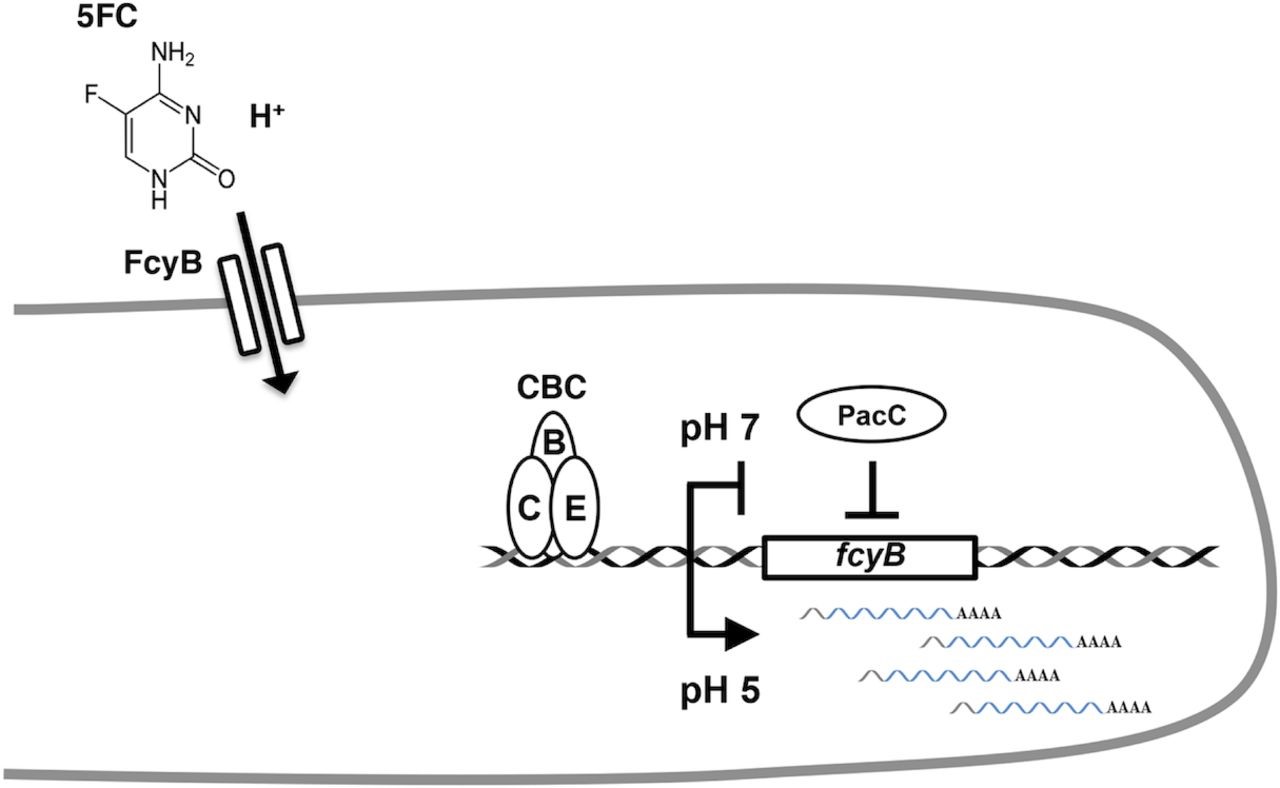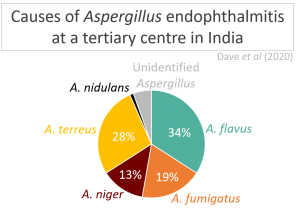Submitted by BethBradshaw on 2 October 2018
Even though resistance to Candida and Cryptococcus species can emerge rapidly, flucytosine is still very useful against these infections in combination with other drugs. Early clinical data suggested some benefit of combining flucytosine with amphotericin B, yet a small randomised study showed no benefit. These data and variable and limited in vitro flucytosine activity against Aspergillus species, meant that flucytosine is not recommended in the treatment of aspergillosis. Some murine models of aspergillosis provide evidence that the drug can significantly improve outcomes. The discrepancy between the in vitro and murine model studies may be linked to the interdependence between flucytosine activity and pH. Over a decade ago, it was found that reducing the pH from 7 to 5 increased flucytosine activity against Aspergillus by up to 4000-fold. The activity of flucytosine at pH 5 reflects the in vivo murine models of infection. In a recent study, Fabio Gsaller et al. have located the fcyB gene, and 2 transcriptional repressors, which account for the pH-dependent activity of flucytosine. This mechanism of action may be key to investigating whether it is possible to enhance the activity of flucytosine for use against human aspergillosis infections.

Flucytosine is a prodrug, and must be processed through the pyrimidine salvage pathway before it has any antifungal activity. The first stage in this pathway is the active transport of flucytosine through the proton/cytosine symporter FCY2 into fungal cells. In this study, the authors show that reduced expression at pH 7 of the FCY2 Aspergillus fumigatus orthologue, FcyB, is the main mechanism conferring flucytosine resistance in A. fumigatus. They also demonstrate that this reduced expression of FcyB is a result of two transcriptional regulators, PacC and the CCAAT binding complex (CBC), which at pH 7 downregulate fcyB, the gene that encodes FcyB.
Building on their previous research into the CBC, Gsaller et al. found that CBC-lacking mutants are hypersusceptible to flucytosine. Along with previous evidence that the activity of flucytosine is pH-dependent, this provided the authors with a starting point for their investigation into the mechanism of Aspergillus flucytosine resistance. The pH-dependency of flucytosine activity led them to hypothesise that the pH-responsive transcription factor, PacC, was also involved in the resistance mechanism. They therefore produced mutants lacking either CBC or PacC and analysed their transcriptional profiles at pH 7 and pH 5. Commonalities between the upregulated genes in these profiles identified fcyB as the key gene promoting pH-dependent flucytosine resistance; this is consistent with previous studies which link fcyB to flucytosine uptake and resistance in both Candida species and Aspergillus nidulans. Gsaller et al. then further investigated the transcriptional data to find that at least one other pH-dependent factor must be involved in modulating the expression of fcyB; this indicates that the CBC- and PacC- mediated regulation of fcyB is a major, but not the sole factor contributing to flucytosine resistance in A. fumigatus. They also provided evidence strongly suggesting that CBC acts as a direct negative regulator of fcyB, although no direct regulatory function could be identified for PacC. From these observations, Gsaller et al. produced the image above as a suggestion for the mechanism of pH-dependent flucytosine resistance in A. fumigatus.
Despite evidence showing that flucytosine is active against Aspergillus infections in murine models, the drug is not used in clinical settings. Although no data are available to indicate the pH in the lung during Aspergillus infection, studies of other pathological states have shown that cellular damage, inflammation, and infection can lead to a localized reduction of the pH, below pH 7. This, coupled with the ability of Aspergillus species to acidify their local environments, suggests that flucytosine may be variably active in the host, depending on the acidity of the local environment. This study also indicates that it would theoretically be possible to enhance the clinical activity of flucytosine by chemically disrupting the pH-sensing mechanisms used by A. fumigatus. In short, understanding the key mechanism of resistance allows us to further investigate the potential uses of flucytosine in antifungal medicine.
News archives
-
Title
Date


